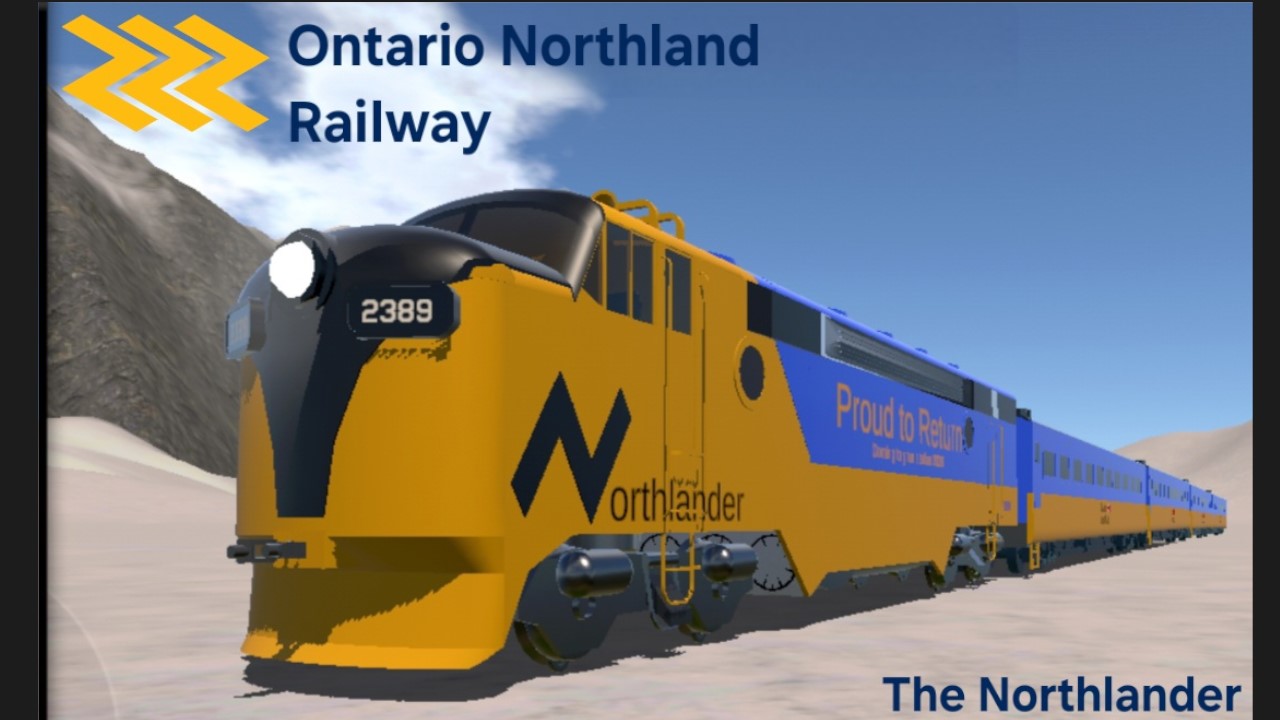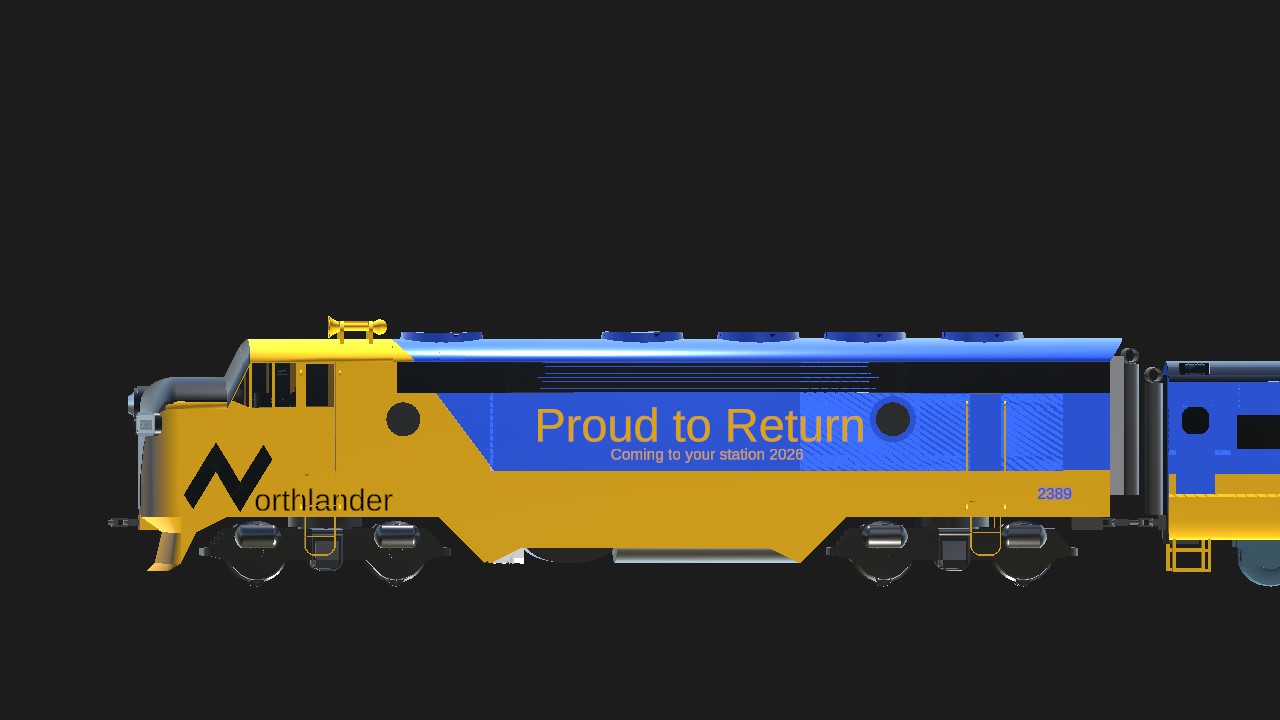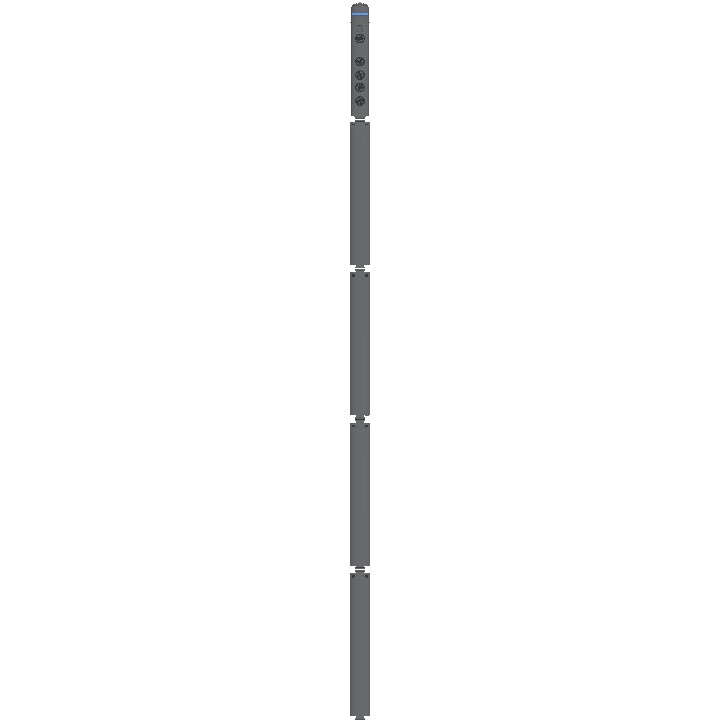Auto Credit Based on Nitsu's EMD F7
The Northlander was a passenger train operated by the provincially-owned Ontario Northland Railway in southern and northeastern Ontario, Canada. In 2012, rail service was discontinued and replaced with express bus service. Rail service will be reinstated in the mid-2020s with an expanded route, greater frequency, new Siemens Venture trainsets manufactured by Siemens Mobility, and various track and station upgrades. The new bi-directional route will run up to seven days a week from Toronto Union Station to Timmins, with an additional new rail connection from Timmins to Cochrane (where passengers can then connect directly to the Polar Bear Express at Cochrane Station) and express bus service from Matheson to Cochrane Station
Specifications
Spotlights
- Nitsu one month ago
- DDVC one month ago
- AircraftExperimental one month ago
- KPLBall one month ago
General Characteristics
- Predecessor EMD F7
- Created On Android
- Wingspan 9.1ft (2.8m)
- Length 330.4ft (100.7m)
- Height 15.1ft (4.6m)
- Empty Weight 277,591lbs (125,913kg)
- Loaded Weight 283,310lbs (128,507kg)
Performance
- Power/Weight Ratio 0.146
- Wing Loading 2,632.0lbs/ft2 (12,850.7kg/m2)
- Wing Area 107.6ft2 (10.0m2)
- Drag Points 42017
Parts
- Number of Parts 1363
- Control Surfaces 0
- Performance Cost 6,104






Historically, Ontario Northland Railway used EMD F7 units, and the Trans Euro Express was known as OnTee (On referring to Ontario). I wanted to make this train but opted for the F7 because of its simplicity.
In May 2021, the provincial government announced plans for Ontario Northland and Metrolinx to write a business case to resume rail operations between Toronto and northeastern Ontario with a 13-stop route to begin service by the mid-2020s. The route would provide service from Toronto to Timmins or Cochrane and would be available between four and seven days a week, based on seasonal travel demands.
In December 2022, the Ontario Government announced a 139.5 million investment that marked a significant milestone in reinstating passenger service between Timmins and Toronto. The government news release mentioned that the three new train sets will be built by Siemens Mobility Limited and will meet the latest EPA Tier 4 diesel emission standards.
On March 23, 2012, the Ontario Government announced that it would begin to wind down the ONTC, citing increased costs to the government and stagnant ridership. Passenger train service between Toronto and Cochrane (the Northlander) was terminated and replaced with additional bus service, and all assets of the corporation were to be sold off.
ONTC traces its history to 1902 with the passage of the Temiskaming and Northern Ontario Railway Act, which received Royal Assent on March 17. The Temiskaming and Northern Ontario Railway Commission (TNORC) would oversee the construction and operation of the Temiskaming and Northern Ontario Railway (T&NO). The sod was turned less than two months later by Ontario's Commissioner of Public Works, the Honourable Francis Robert Latchford, at Trout Lake on the outskirts of North Bay; North Bay also being the site of the "first spike" driven in construction of the Canadian Pacific Railway (CPR) 20 years previous.
Building the 253 mile T&NO main line from North Bay to Cochrane was instrumental in opening this region of the province for development and settlement, with its construction being cited as the reason for the discovery of a massive silver deposit at Cobalt, as well as gold at Porcupine and Kirkland Lake.
Six years after construction started, the federal government's National Transcontinental Railway (NTR) main line from Winnipeg, Manitoba to Moncton, New Brunswick crossed the T&NO at Cochrane.
In subsequent years, the TNORC authorized extending the railway first into western Quebec's gold and copper fields at Rouyn-Noranda and, following World War I, in 1921, the TONRC began extending the T&NO northward from Cochrane to the shores of James Bay at Moosonee, where the T&NO "Last Spike" was driven by the Honourable Justice Francis Robert Latchford in 1932. The Commission also worked closely with sister provincial Crown agency, the Ontario Hydro-Electric Commission, in developing hydroelectric generating stations on rivers in the region, such as at Island Falls and Fraserdale
Great work, nice paintjob.
@SEPAHIRAN136 wut website?
If this gets enough upvotes I'll make the Bombardier LRC Trainset (including locomotive)